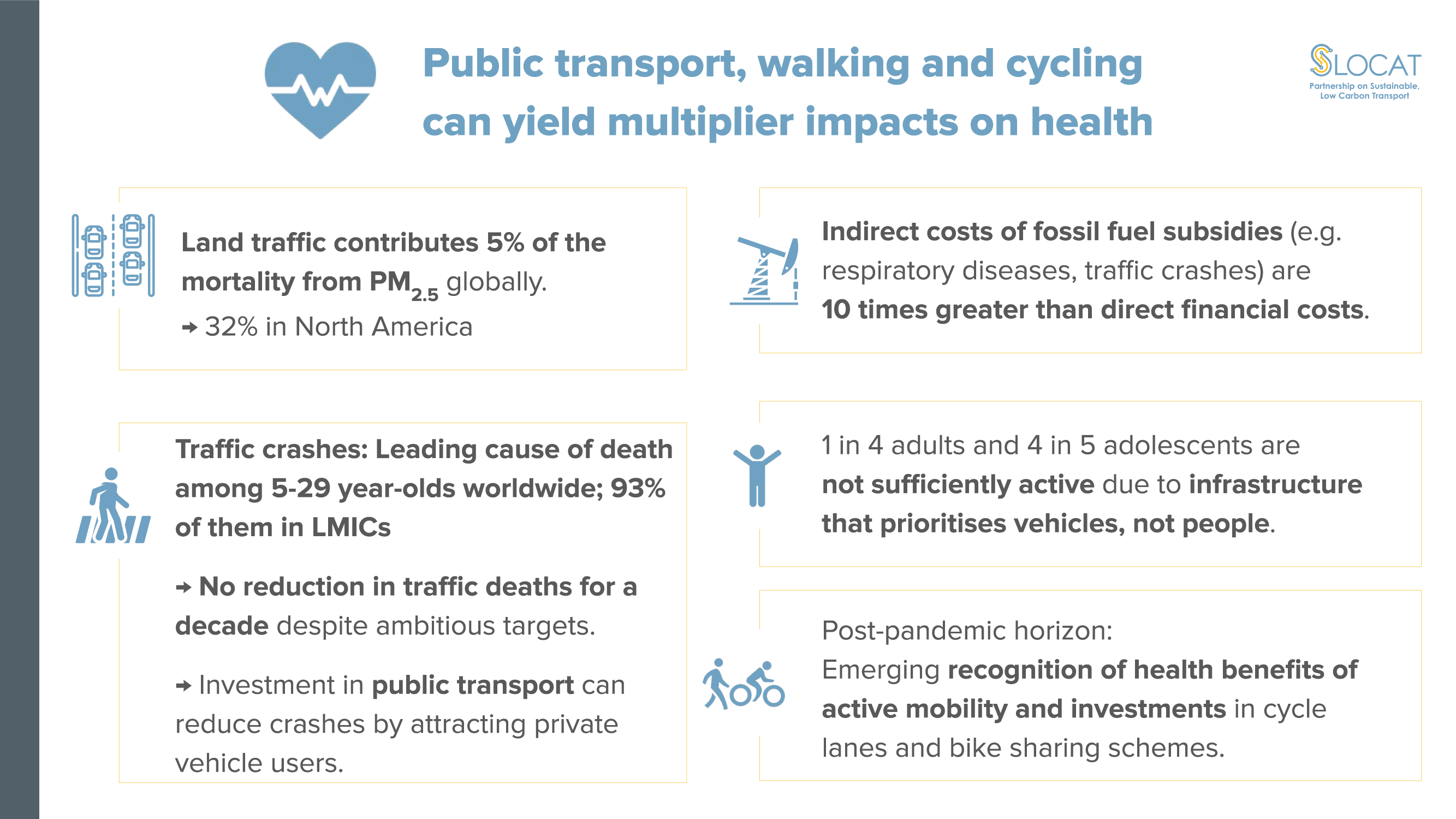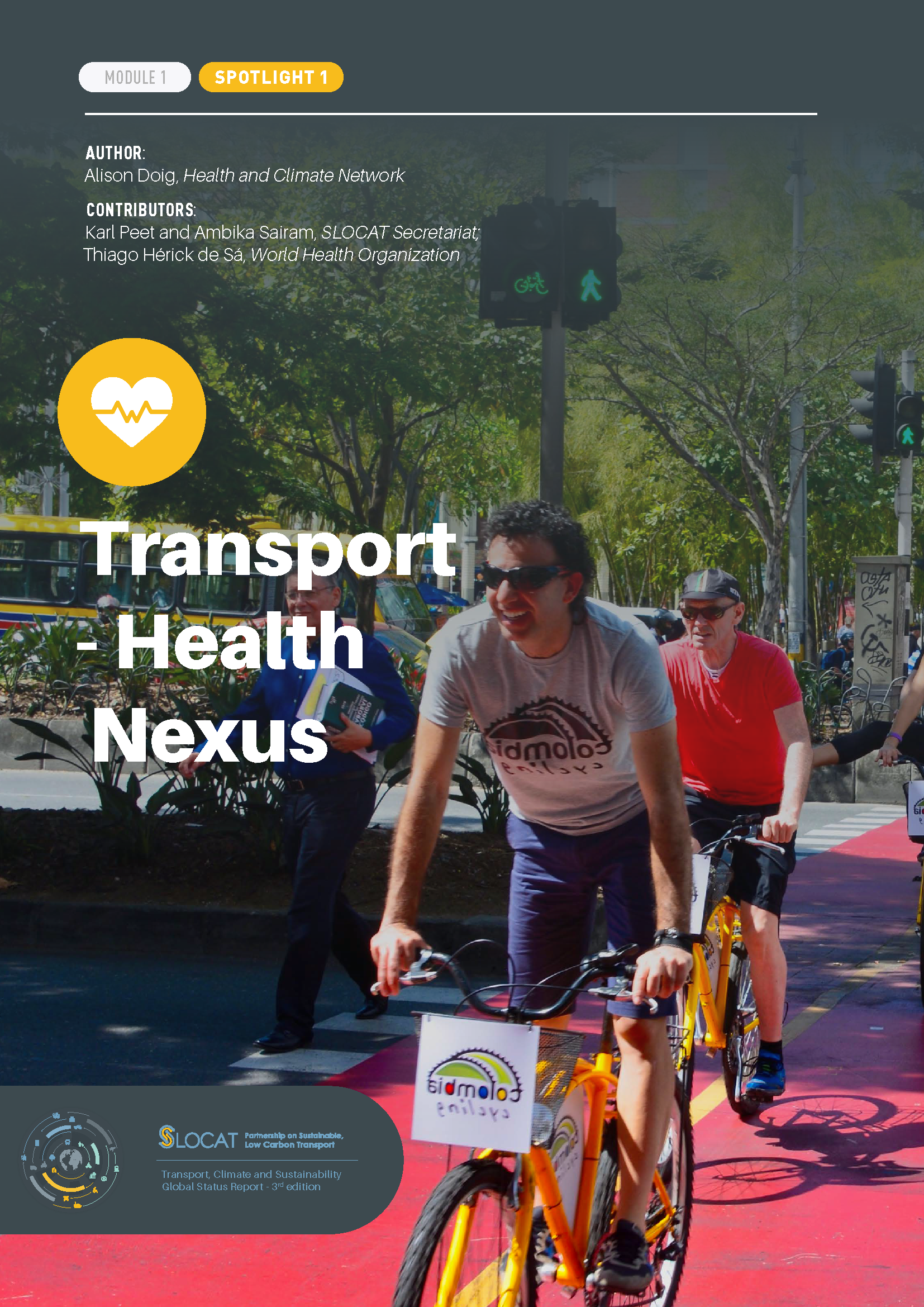-
 Transport-Health Nexus
Transport-Health Nexus
- Key Findings
Health impacts of transport
- Ambient air pollution increases the risk of cardiovascular and respiratory diseases, contributing to 4.2 million premature deaths in 2019.
- Land traffic contributes an estimated 5% of the mortality from small particulate matter (PM2.5) globally, and as much as 32% in North America.
- The average level of PM2.5 pollution in the world’s largest cities is nearly four times higher than World Health Organization guidelines.
- An estimated one-in-four adults and four-in-five adolescents are not sufficiently active, due in part to urban and transport infrastructure that prioritises vehicles, not people.
- Around 1.35 million people worldwide were killed due to road traffic crashes in 2016 (latest available data), with pedestrians, cyclists and motorcyclists accounting for more than half of these deaths.
- Traffic crashes are the leading cause of death among young people ages 5-29 and the eighth greatest cause of death among all age groups. Despite ambitious targets, there has been no reduction in traffic deaths for a decade.
- In 14 of 20 countries (mostly in the Organisation for Economic Co-operation and Development), road traffic crashes increased in the first half of 2022 but remained lower than pre-pandemic levels.
- Investment in safe, reliable and affordable public transport systems can reduce crashes by attracting motorcycle users even in areas with high motorcycle ownership.
- Inaccessibility to transport can reduce opportunities for people to get the healthcare services they need, and at times even discourage them from seeking care.
- Studies have shown that safe, active transport can boost mental health and that safe and efficient public transport can reduce commuter anxiety.
Policy measures and targets for a transport-health nexus
- The indirect costs of fossil fuel subsidies (including respiratory disease and traffic crashes) are an estimated ten times greater than their direct financial cost.
- Redirecting fossil fuel subsidies towards sustainable, low-carbon transport modes (and to directly benefit healthcare systems) can lead to improved health outcomes.
- Urban and national decision makers can choose from an increasing number of policy tools to promote health-focused transport systems.
- In response to stronger emission standards in many jurisdictions, decision makers are increasingly turning to newer vehicle technologies to curb outdoor pollution and promote better health.
- In the post-pandemic world, national and sub-national governments are increasingly recognising the health benefits of active mobility and are investing in policies to promote walking and cycling, such as cycle lanes and bike sharing schemes.
- After the world failed to meet road safety targets set for the decade 2010-2020, the United Nations General Assembly in 2020 declared a second Decade of Action for Road Safety (2021-2030), setting an ambitious target to halve road traffic deaths and injuries by 2030.
Author: Alison Doig, Health and Climate Network (HCN)
Contributors: Karl Peet and Ambika Sairam, SLOCAT Secretariat; Thiago Hérick de Sá, World Health Organization


